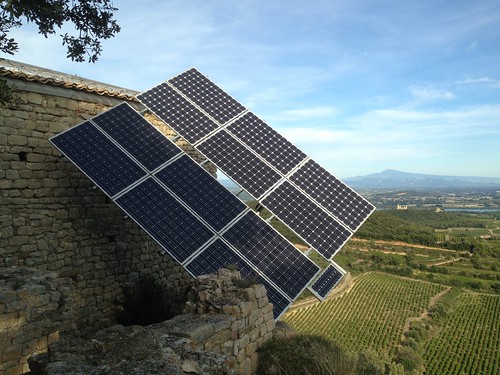Unobstructed
soffit was required on this project requiring a raised floor to cover the upturned beams and the space
created below the floor facilitated IT distribution and sprinklers. The thermal
mass of concrete and properties of normal weight concrete were critical to
effectiveness of the natural ventilation on this project. Locations good for
this application are the “west coast and desert regions of the United States, where the climate
has daytime to nighttime temperature change of about 30 degrees, mechanical engineers can design cooling systems that take advantage of
radiating cool from the structure….The efficacy of this method of cooling
requires that the structural thermal mass elements must be directly exposed to
the building occupants so that the structure can absorb heat gained during the
day, and radiate (or release) heat during the night. Ceilings, floors, and
walls that are covered with finishes will not be as effective in cooling a
building….Concrete buildings naturally lend themselves to this strategy.
(Kestner 2010)
Concrete fill on
steel deck used in steel buildings can also provide thermal mass, but if the
underside of the deck is fireproofed, its ability to transfer heat will be
greatly reduced, thus reducing the effectiveness....Structural CMU walls, if
exposed, can provide sufficient thermal mass for come buildings. The architect
will usually require units with architectural finishes, and will require precise
lay-up and high quality workmanship.” (Kang 2006)
Steel in
buildings lend themselves to other another natural ventilation strategy called
stack effect. Stack effect requires
pathway up the height of the building “unobstructed of walls or other large
elements” and can benefit from using a “material that heats up quickly when
exposed to sunlight…along exterior towers to draw hot air towards it.” (Kang 2006)
Such an example is the Porticullis House which contains tall steel
towers.
Structural
Considerations for Innovative Systems
Sunshades and
light shelves require support typically integrated with curtain wall systems
and the structural engineer may provide design loads for the design build
window supplier and then review design and calculations. Panels are about 5psf
typically with frequent penetrations to roofing for armatures to resist uplift;
alternatively, armatures could be designed to engage ballast to resist uplift
increasing system weight to 20 psf to 25psf. And care in checking seismic forces
should be taken when adding a system to an existing building.
For radiant
heating the primary concern is the coil, One option is to have a topping slab to encase
the coil adding weight to the system. Encasing
it in the structural depth of the slab taking lots of coordination with
structural requirements of the slab especially at high shear and bending
locations. Additionally coils limit future flexibility because coils are
difficult to locate when needing to avoid damaging a coil when making a new slab
penetration.
Green roofs
present heavier loads on the roof and consideration of drainage of water needs
to be considered so as water cannot accumulate more than anticipated so as not
to overload the roof. (Kang 2006, Gartner 2008)
For more design
recommendations on implementation of these strategies, see the SEI
Sustainability Committee’s book Sustainability
Guidelines for the Structural Engineer and the SEAONC white paper
“Structural Engineering Strategies Towards Sustainable Design,” full citations
in the references section of Q2.
References
Kang, Grace and Alan Kren, (2006). “Structural
Engineering Strategies Towards Sustainable Design,” SEAOC Proceedings 2006. Pp.473-490.
Kestner, Dirk, Jennifer Goupil, and Emily Lorenz, (2010).
Sustainability Guidelines for the
Structural Engineer, Sponsored by
Sustainability Committee of the Structural Engineering Institute of ASCE,
Reston, VA: ASCE, 978-0-7844-1119-3.





















